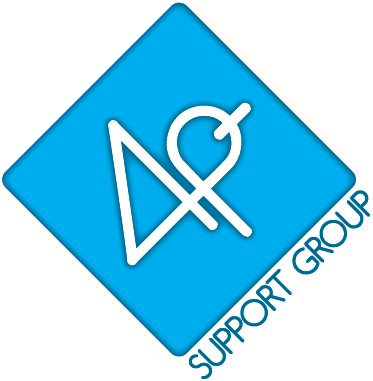General Information
Wolf-Hirschhorn Syndrome (WHS)
Deletions of the short arm of a B group (4-5) chromosome was initially thought to be associated with the cri du chat (cat-cry) syndrome (also known as 5p-). However, patients were noted with many of the characteristics of the syndrome but without the catlike cry. In 1965 Wolf et al. and Hirschhorn et al. published reports showing that there was a syndrome with a deletion on the short arm of the fourth chromosome.
The amount of material deleted may range from about 50% of the short arm to a small break that can’t be detected by normal chromosome analysis. In 10-20% of the cases the deletion can occur as a result of a translocated chromosome in the parent.
Because of this wide range of deleted material, the effect on our children varies widely. Some can walk, talk and assist in their daily care while others are not verbal and require constant care. Some are near normal height and weight while others at ages 20-30 weight only 35-50 lbs and are only 45-55 inches tall. The medical involvement also varies from near normal to severe heart and other problems. However, a common trait seems to be that our children are (for the most part) happy, loving children. We have some sayings in our group; “never say never”, “let your child show you what they can do” and “everything is in their own timing”.
Children with WHS exhibited relative strengths in Verbal and Quantitative Reasoning, and relative weaknesses in Abstract/Visual Reasoning and Short-term Memory. The pattern of strengths and weaknesses found in children with WHS differs from those we observed in children with deletions 2q37 and 8p23. …However, children with WHS exhibit a significant relative strength in Socialization compared to their communication and daily living skills. –Fisch GS, Battaglia A, Parrini B, Youngblom J, Simensen R. 2008. Cognitive-behavioral features of children with Wolf–Hirschhorn syndrome: Preliminary report of 12 cases. Am J Med Genet Part C Semin Med Genet 148C:252–256. Cognitive-behavioral features of Wolf-Hirschhorn syndrome and other subtelomeric microdeletions. Fisch GS, Grossfeld P, Falk R, Battaglia A, Youngblom J, Simensen R. 2010 Nov 15;154C(4):417-26.
Major symptoms may include severe growth and intellectual disability, microcephaly, “Greek Helmet” faces, and closure defects (cleft lip or palate, coloboma of the eye, and cardiac septal defects) and other physical disabilities .
The life expectancy for WHS children is unknown. The mortality rate is lower than once thought. The oldest member of our group was born in 1949, and several are in their 30’s and 40’s. Abstract by Shannon, Maltby and Rigby on mortality rate can be found http://jmg.bmj.com/content/38/10/674.abstract. We advise new parents to use caution when searching for information on WHS. There usually tends to be a skewing of information to the negatives. Due to “publication ownership” the most recent research on WHS is not available to the general public. There have been great advances in medical care and treatments that have enabled our kids to live longer, happier lives. There is no reason to expect a child with WHS will live a shorter life than the rest of the population based solely on having this genetic condition. Without the presence of inoperable congenital defects and other untreatable conditions, and with routine, proactive and extraordinary care by their primary physician and specialists our children are now living much longer than originally predicted in the 60’s and 70’s. The 4p- Support Group has knowledge of over 600 individulas with 4p-/WHS since it was formed over 20 years ago, of which over 200 are living and have a date of birth in 1993 or earlier. The majority of our records are from the US.
Gene Reviews has an entry for Wolf-Hirschhorn Syndrome (WHS) which provides a good starting point. http://www.ncbi.nlm.nih.gov/bookshelf/br.fcgi?book=gene&part=whs
Genetic Home Reference: http://ghr.nlm.nih.gov/condition=wolf-hirschhorn-syndrome
Abilities of development support in children with genetic syndromes. Experiences from annual integrational meetings: http://www.ojrd.com/content/pdf/1750-1172-5-S1-P15.pdf
